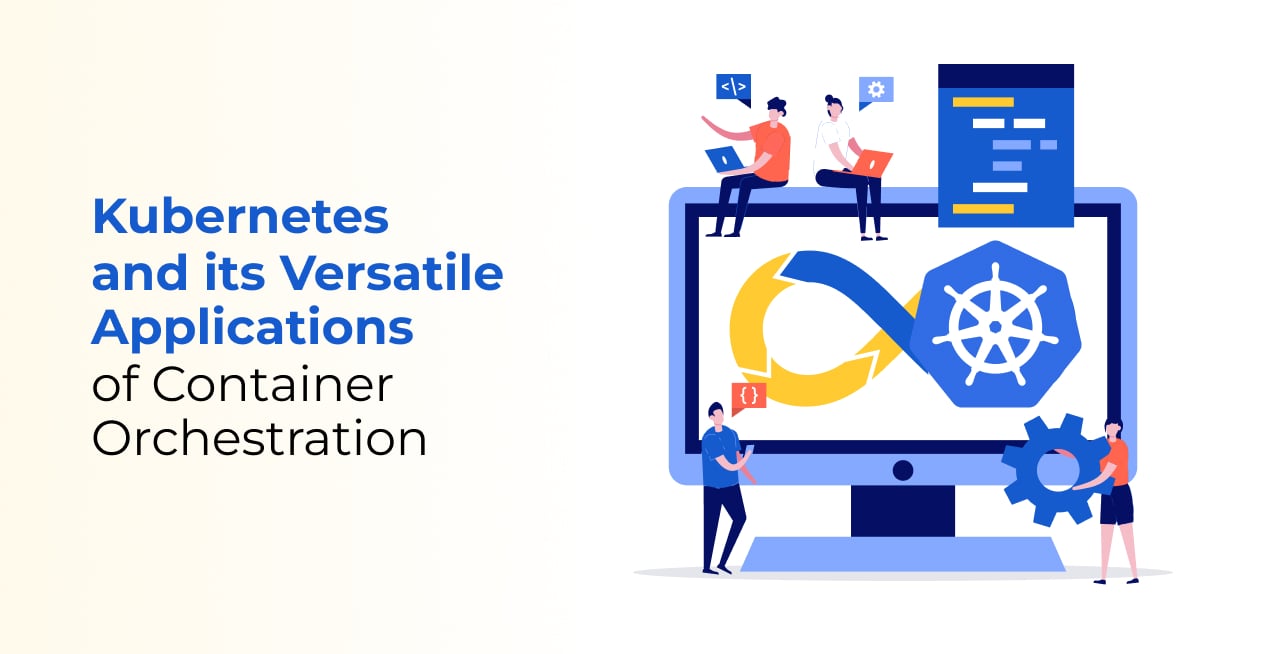Introduction
Containerization is the new buzzword of IT marketplaces.This new trend refers to the software deployment process which ties up an application’s code along with its libraries to help them run on any infrastructure. Conventionally, to run an application, users need to ensure that the installed version is compatible with the machine’s operating system. On the other hand, with containerization, users create a single software package or container that runs on all types of devices and operating systems. The latest tool that encourages Containerization is Kubernetes. But before we get into understanding how Kubernetes is changing the orchestration of containers, let us have a look at Containerization and its properties.
Containerization
Containerization is a type of virtualization that includes wrapping all of an application’s components into a single container image. These containers are portable, lightweight and best suited for automation. They thus become the foundation for developmental CI/CD pipelines and application infrastructure. Developers prefer to containerize for improving the development cycles of the applications and benefits it brings to the table.
Benefits of Containerization include:
- Efficiency
- Shorter developmental cycle
- Faster development and resources allocation
- Better Management
- Flexibility
- Lesser bugs and application failures
Containerization provides versatility to developmental processes, and finds a myriad of applications in the IT Markets. It is known to successfully increase DevOps productivity, streamline workflows and accelerate deployment while utilizing all resources.
What is Kubernetes?
Kubernetes is container-centric management open-source software for automating software deployment, management and scaling. Though created by Google, it is now managed by Cloud Native Computing Foundation. In Greek, the term Kubernetes means ‘helmsman’ or ‘pilot’ and this is exactly what the function does. It automates operational tasks and navigates through the various processes. The software is a new benchmark when it comes to containerisation in businesses by making everything associated with deploying and managing your application easier. Borg, Google’s internal management software was the inspiration behind Kubernetes. Borg’s attributes of providing flawless container orchestration, when incorporated in Kubernetes, is known to have helped businesses save a lot of time, resources and money.
How does Kubernetes employ Containerization?
Kubernetes as a software employ containerization by automating the deployment, scaling, and management of containers without launching virtual machines for any applications. It provides automation of operational tasks of containerization, with the help of built- in dialogues and instructions. The software helps developers edit applications, scale them, manage and monitor while updating them with the latest technologies. Here are a few functions that Kubernetes container orchestration help facilitate:
- Load Detection and Balancing : The software regulates traffic network and distributes it uniformly to stabilize deployment of the application.
- Storage management : Kubernetes allows users to choose from different storages such as local storages, clouds, databases, and more.
- Automated containers : Kubernetes helps automate creation of new containers of code, removal of existing ones or modification of faulty ones.
- Self-healing : The software efficiently restarts containers that fail, replaces containers that need replacement, kills containers that don’t respond to application health checks, and does not present to clients unless it is completely ready, failure free and working efficiently.
- Secret and configuration management : The software also adds an extra layer of security by storing Auth0 Tokens, SSH keys and encryption lists. It allows users to deploy updates and configure applications without exposing the intricacies of unique Stack configuration.
Benefits of Kubernetes
Kubernetes’ success can be attributed to the huge number of benefits that the software brings to the table. These attributes have proven to be advantageous for businesses looking to digitally transform their business functions.
Automation of operations
Kubernetes is extremely beneficial when it comes to digitally transforming workflows. Its built-in commands are convenient in automating day to day operational tasks.
Multi cloud Capabilities
With Kubernetes, users get the option of choosing to keep their workloads in a single place or spread across multiple platforms all hosted on cloud. This not only makes an application more secure but also allows users to avail more features via different platforms at a fraction of cost.
Shorter developmental cycles
Kubernetes as a software helps you build cloud native applications in much less time as the code is available in containers.
Deploying Software on different platforms
Kubernetes is versatile in the way that it can run on various platforms- be it on site platforms, public clouds or hybrid deployments giving users the liberty of using multiple cloud based tools.
Running efficient services
Another advantageous feature of Kubernetes is its ability to automatically adjust the size of a cluster required for a container. This enables you to automatically scale your applications, up and down, based on the demand and run them efficiently.
Saving Container Orchestration costs
Businesses of all sizes, large or small, that utilize Kubernetes services have successfully saved on developmental costs, maintenance costs and automation of manual procedures. Using resources optimally, Kubernetes automatically configures and fits containers onto nodes. Running fewer clusters results in usage of fewer API servers and other redundancies, which reduces expenses on public cloud servers that charge based on the number of clusters which are run.
Increased DevOps efficiency for microservices architecture
Compared to developing virtual machine (VM) images, building container images—which include everything an application needs to run—is quicker and more effective. All of this translates to quicker development, improved deployment and release timelines.
Kubernetes vs Docker
In the containerization ecosystem, Docker and Kubernetes are common container orchestration tools that are often used. Introduced in 2013, Docker is known for bringing in the modern era of containerization which has further boosted microservices and their service models. Containers are independent of their operating systems which further enhances development of scalable microservices. Until very recently, when applications grew in complexity and it became difficult to hold containers distributed across numerous servers. Kubernetes was created to address these challenges, coordinate and schedule multiple containers, facilitate communications between these containers and scale them as required.
Docker helps box applications, fundamentally like a drawer. It allows developers to store all code and libraries that are required to run an application, in one place and access them as required. Once this is done, Kubernetes framework helps manage these cohesive boxes of applications and send them where and when required. Here are some points that should be remembered about the two frameworks.
- Docker can run independently; it is a standalone software that creates and runs containers. On the other hand, Kubernetes needs a container runtime to function and thus cannot be used on its own but rather in combination with other software.
- Kubernetes together with Docker is a great combination of tools to containerize your applications and run them at scale.
- On one hand, Docker is an open source tool used for OS level virtualization, packaging and distributing applications in containers,
- Whereas Kubernetes depends on Docker to deploy, manage, and scale containerized applications. This marks the major difference between the two containerization tools.
Conclusion
Containerization is being exceedingly preferred by developers for the various benefits it endows. The introduction of modern containerization tools like Docker and Kubernetes have catapulted developers’ usage of containers into mainstream developmental practices. As applications grow more complex in functions , use of Kubernetes is only bound to grow. There are many DevOps companies who are already benefiting by using Kubernetes to improve their practices. Businesses looking to develop robust applications in lesser time should hire DevOps engineers well versed with Kubernetes. OpenXcell is one such company whose diverse developers teams are well equipped to use Kubernetes and Docker tools and can help build stellar Software solutions.










